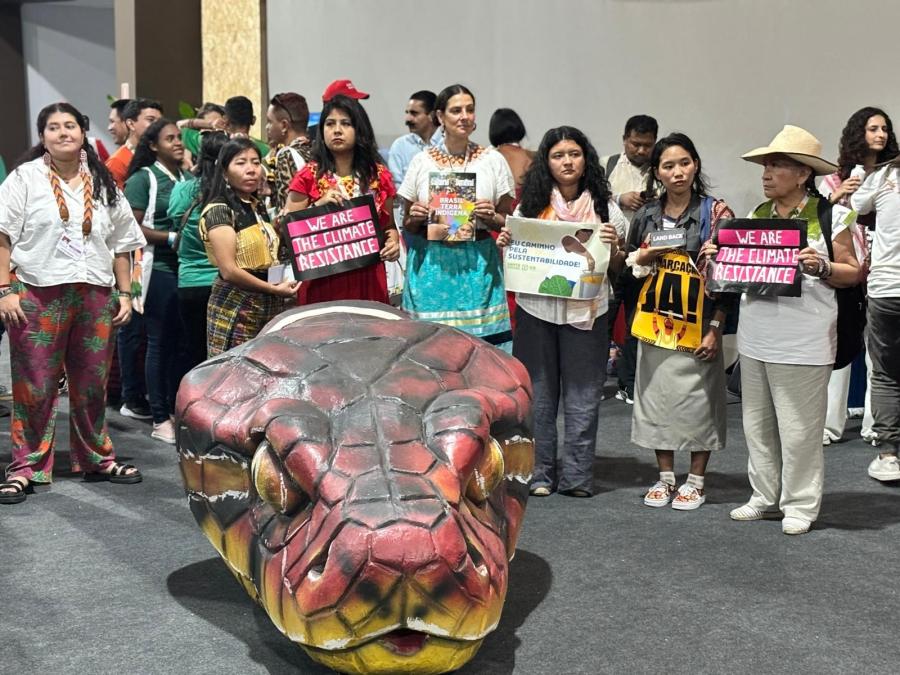Yearly, industrial countries produce one proud of pesticides for every man, woman, and child on earth. 75% of all pesticides arriving in the Third World, more than 600 million pounds, come from the U.S. Between 150 and 200 million pounds of these pesticides are either banned or not registered in this country; another 31 million pounds have been either suspended or cancelled for use in the U.S. due to either potential hazard to humans, wildlife, or the environment.
Meanwhile, Third World consumption of pesticides is growing. The Washington Post reported that by 1980, 40% of the $2.6 billion U.S. pesticide industry was destined for export markets. From 1964-74, the pesticide use in Africa quintupled. In the Philippines, pesticide imports quadrupled between 1972 and 1978. In 1978, Colombia consumed 17 million kgs. of pesticides, including such banned items as DDT, Aldrin, and Parathion: Colombia now uses 683 brands of banned pesticides, including 55 which contain 2, 4-d and 2,4,5-T. In El Salvador, 1.25 tons of insecticides are used per square mile of cotton fields. In Central America cotton crops are sprayed with pesticides as much as 28 times per growing season.
Many other countries now produce their own pesticides. Brazil has more than 8,000 local companies producing pesticides in competition with multinationals such as Shell, Dow, Bayer, Sandoz and Ciba Geigy, who have all invested in plants there. In Malaysia, Aldrin, BHC and DDT (all banned in the U.S.) account for 75 percent of the nearly 1,000 tons of locally produced pesticides.
Incidents of pesticide poisonings as well as macro statistics are hard to find. The host governments do not like to mention them. According to the supervisor of the U.S. Government Accounting Office's investigation of pesticides, the problem is threefold: 1) it hurts tourism; 2) officials don't like to admit that fellow citizens are being poisoned, and that the government is unable or unwilling to stop it; and 3) the governments are afraid that the U.S. will begin to examine imports more closely.
Nevertheless, pesticide poisonings have increased. World Health Organization officials estimate that one Third World resident is poisoned by pesticides every minute; of these approximately 500,000 poisonings per year, 5,000 are fatal. In Brazil, between 1967 and 1975, at least 155 deaths and 1,682 illnesses were attributed to insecticide use on cotton and soybeans in southern Brazil. In Central America, 19,300 medically certified poisonings occurred from 1971-76. About 17,000 of these occurred in El Salvador and Guatemala, a daily rate of about one case per 100,000 people. In Tiquisate, Guatemala, 30-40 people are treated daily for the toxic effects of pesticides on their liver and other organs. In Caliacán, Mexico, official reports indicate 2-3 poisonings, per week among the workers in tomato fields, where produce is destined for U.S. markets. Most pesticide poisonings and fatalities in Central America, where agribusinesses provide the health services, are not reported. Unofficial reports, however, indicate that a fatality occurs every 2-3 days.
In some cases, villagers are unaware of the danger posed by pesticides. In 1977, 44 deaths occurred in South Africa after people handled agricultural chemicals. In most cases people did not wash themselves property, did not clean food that had been sprayed, or used pesticide containers for drinking or cooking. In Iran, butchers are reported to have sprayed carcasses with insecticides to keep the flys away. In 1972, 400 Iraqis died and 5,000 were hospitalized after consuming products made from 8,000 tons of wheat and barley coated with an organic mercury fungicide. Initially the seed was preferred because loaves made from it were pink. In Pakistan, Guatemala, and the US Southwest mercury poisoning occurred after eating similarly treated seed. In Papua New Guinea, an aide at Mt. Hagen Hospital brought an empty Paraquat bottle, clearly marked "poison" in English, to be filled with clearly marked "poison" in English, to be filled with cough syrup. He did not read English. Throughout the world pesticide containers are sold as water containers, and plastic pesticide bags are used as raincoats.
Even safe pesticides are dangerous when used by uneducated workers. In the Middle-East, peasants wrap pesticide powders in their turbans to carry them home or to the fields. Paraquat and Parathion are often sold in Coke bottles. In Indonesia, small shops sell pesticides alongside food items. Often reasoning that if a little bit is good, a lot is better, individuals exceed recommended use. More important, perhaps, many companies do not bother to include instructions in the local language. Even when they do, as in Mexico, more than 50% of the pesticides sold are reported labeled incorrectly.
Many pesticides are consumed through contaminated food. Increasing quantities of food imports in the U.S. have been contaminated by pesticides. Shipments of cacao from Ecuador, coffee from Costa Rica, sugar and tea from India, beef from Central America, and beans and peppers from Mexico, to name but a few, have contained such banned chemicals as Aldrin, Chlordane, Dieldrin, and Heptachlor. Presumably, Third world people eat similarly contaminated food, as well as that which is returned from the US.
Furthermore, pesticides are often more widely dispersed than originally intended. The Consumers Association of Penang, Malaysia, found organo-chloride pesticides (Aldrin, BHC, Chlordane, DDT, and Dieldrin) in rainwater, soil, drinking water and food crops. A similar situation exists in Brazil's Guaporé Valley. The wider effects of such environmental pollution are only beginning to surface: nevertheless, these non-degradable pesticides will be around for some time even if their use stops immediately.
BENEFITS AND COSTS
Supporters of pesticide exports often state that, for Third World countries, the benefits of using such chemicals outweigh the costs. Insecticides, it is argued, control disease vectors common to tropical countries. Similarly, others state that pesticides are essential to produce. Food or export crops which generate foreign exchange. Such statements must be viewed critically.
An obvious defense of pesticides in the control or elimination of disease vectors lies in the use of DDT in malarial eradication programs. Globally, as late as 1955, 200 million people contracted malaria each year; 2 million of them died. In 1952 an anti-malarial program started in India and reduced the yearly cases from 100 million to 60,000. Within a decade Sri Lanka launched a similar program, cutting the annual incidence of malaria from 3 million cases to less than 25. In El Salvador malaria cases dropped from 70,000 annually to 25,000. DDT and chloroquine seemed the perfect answer to malaria.
Yet in countries such as India, Pakistan, Sri Lanka, Afghanistan, Nepal, Bangladesh, Iran, Turkey, Burma, Thailand, Honduras, Nicaragua, Costa Rica, and El Salvador, to name but a few, there have been increases in malaria during the late sixties and seventies. In India the number of cases rose from a low of 60,000 per year to at least 5 million. In Sri Lanka the number of cases rose from a low of 25 per year to some 2 million. In El Salvador, there are now more cases of malaria than when the eradication programs started. In other areas of Central America, particularly Honduras and Costa Rica, malaria is now found in areas where it had not before been a serious problem.
The explanation for current increases in malaria is straightforward. As malaria came under control, but before it was eradicated, governments shifted funds to projects that appeared to be more urgent and that produced less criticism. Officials were unaware that by shifting from eradication programs to those of containment, they did not eradicate the carriers but rather allowed them to adapt to the insecticides. Mutant mosquitoes began to appear.
Careless spraying in Nicaragua and El Salvador, for example, are held responsible for the spread of mutant mosquitoes into neighboring Honduras and Costa Rica. Increased use of insecticides in agriculture also seems to have allowed mutant, resistant strains of mosquitoes to develop. The amount of DDT and other insecticides in agricultural also seems to have allowed mutant, resistant strains of mosquitoes to develop. The amount of DDT and other insecticides in agricultural use has increased dramatically. In 1977 the FAO listed 364 agricultural insects that have become resistant to important pesticides, including mosquitoes which had become resistant to DDT and other insecticides in 62 countries. The number of resistant insects had doubled since 1965.
If DDT had been used solely for the eradication of malaria-transmitting mosquitos, evidence suggests that it might have been successful. However, with DDT also being used for agriculture it became less effective. Governments, concerned at the increase in incidents of malaria, used increasingly stronger chemicals. New pesticides kill mosquitoes resistant to DDT, but in turn create mutants resistant to a broad range of even untested pesticides. This promises spirialing costs and ineffectiveness in attempting to control these pests.
Another argument for the beneficial aspects of pesticide use is for food production. However useful pesticides might prove to be for such crops, they are rarely used on them. Reports indicate that 50-70 percent of pesticides are used on export crops such as coffee, sugar, and rubber. These crops are grown on large corporate farms and plantations where foreign owners are often the largest consumers of pesticides. In Indonesia plantations producing export crops are reported to use 20 times the quantity of pesticides used by small farmers growing food for local consumption, even though small farms occupy seven times the total acreage of the plantations. In Nicaragua, increased use of pesticides between 1952 and 1967 paralleled a fourfold increase in cotton acreage and a 50 percent reduction in food crop acreage. Throughout Central America, despite widespread hunger and malnutrition, America, despite widespread hunger and malnutrition, cotton displaced food crops in the mid-sixties and now 70% of the value of agricultural production is exported.
Even on export crops the use of insecticides does not always achieve the desired results. In 1970, cotton growers in India used 3 million kg. of DDT to produce 5 million bales; by 1976, with increased insect resistance, twice as much DDT was needed to obtain the same yield. During the same period from 60,000 to several million people contracted malaria.
Article copyright Cultural Survival, Inc.



